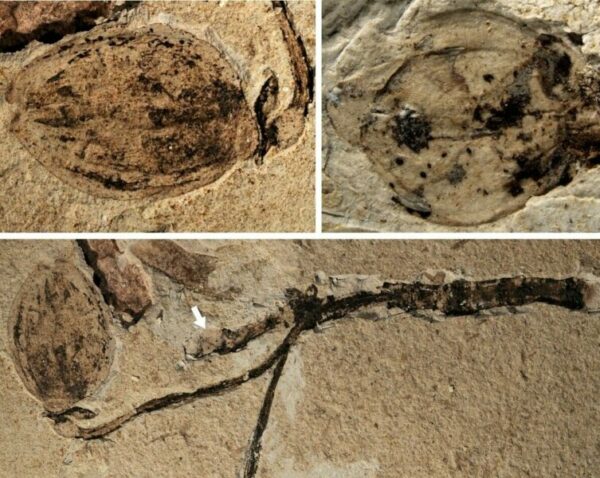Angiosperms may be distinguished from their gymnosperm peers by their flowers, and thus a flower is a good proxy of fossil angiosperms.
However, flowers and their parts are usually too frail to be preserved in the fossil, which makes the origin of angiosperms and their flowers the foci of controversy.
Recently, Prof. WANG Xin from the Nanjing Institute of Geology and Palaeontology of the Chinese Academy of Sciences (NIGPAS), in collaboration with scientists from South China Agricultural University, reported a fossil flower bud, Florigerminis jurassica gen. et sp. nov., from the Jurassic in Inner Mongolia, China. This is the earliest fossil record of flower buds in the world so far.
The study was published in Geological Society, London, Special Publications.
“This fossil includes not only a leafy branch but also physically connected fruit and flower bud,” said Prof. WANG. The developmentally interpolated existence of a blooming flower between the flower bud and mature fruit in Florigerminis suggests that angiosperm flowers were present in the Jurassic, in agreement with recent botanical progress.
Previous plant fossils were often preserved fragmentarily, leading paleobotanists to consider them as belonging to different plants. This Florigerminis jurassica underscores the presence of angiosperms in the Jurassic and demands a rethinking of angiosperm evolution.
This research was supported by the Strategic Priority Research Program (B) of the Chinese Academy of Sciences and the National Natural Science Foundation of China.
Read the paper: Geological Society, London, Special Publications
Article source: Chinese Academy of Sciences
Author: Li Yuan
Image: Florigerminis jurassica gen. et sp. nov. and its details. Credit: NIGPAS.






